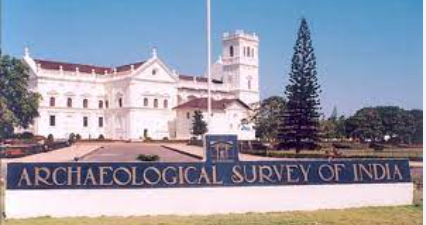Archaeological Survey of India (ASI)
The Archaeological Survey of India (ASI) is the premier organization responsible for archaeological research, preservation, and protection of the cultural heritage of India. It functions under the Ministry of Culture, Government of India. Established in 1861 by Alexander Cunningham, who also became its first Director-General, the ASI is headquartered in New Delhi.
History
The origins of the Archaeological Survey of India can be traced back to the efforts of Sir William Jones, who founded the Asiatic Society in 1784. However, it was Alexander Cunningham who formally proposed the establishment of an archaeological survey in 1848. The ASI was officially founded in 1861, with Cunningham as its first Director-General. The early years of the ASI focused on documenting and surveying historical sites across the country.
Functions and Responsibilities
The primary functions and responsibilities of the Archaeological Survey of India include:
- Conducting archaeological explorations and excavations
- Preserving, conserving, and protecting monuments and sites of national importance
- Developing and maintaining site museums
- Conducting epigraphical studies and research
- Regulating antiquities and art treasure export
- Maintaining the National Register of Monuments and Sites
As of 2021, the ASI protects and maintains 3,693 monuments of national importance, including 143 ticketed sites.
Notable Discoveries and Excavations
The Archaeological Survey of India has been instrumental in several significant discoveries and excavations, including:
- Harappa and Mohenjodaro (Indus Valley Civilization)
- Taxila (Ancient center of learning)
- Nalanda (Ancient university)
- Dholavira (Harappan site in Gujarat)
- Rakhigarhi (Harappan site in Haryana)
- Ajanta and Ellora Caves (Maharashtra)
- Sanchi Stupa (Madhya Pradesh)
- Mahabalipuram (Tamil Nadu)
Controversies and Challenges
The ASI has faced several controversies and challenges over the years, including:
- Inadequate funding and resources for conservation and maintenance of monuments
- Encroachment and illegal construction around protected sites
- Theft and smuggling of antiquities
- Controversies surrounding the restoration and renovation of certain monuments, such as the Taj Mahal
Despite these challenges, the ASI continues to work towards preserving and protecting India’s rich cultural heritage.
Initiatives and Collaborations
The Archaeological Survey of India has undertaken several initiatives and collaborations to promote archaeological research and heritage conservation, including:
- National Mission on Monuments and Antiquities (NMMA): A mission to create a comprehensive database of built heritage and sites from the secondary sources and antiquities from different sources in the country.
- Indian Heritage Cities Network (IHCN): A network of historic cities aimed at promoting heritage-based sustainable development.
- Collaboration with international organizations: Such as UNESCO, ICOMOS, and the British Museum for research, conservation, and capacity building.
The Archaeological Survey of India plays a vital role in preserving, protecting, and promoting India’s rich cultural heritage. Through its various functions, discoveries, and initiatives, the ASI has contributed significantly to the understanding and appreciation of India’s past. As the organization continues to adapt to new challenges and opportunities, its work remains crucial in ensuring that India’s cultural legacy is preserved for future generations.


